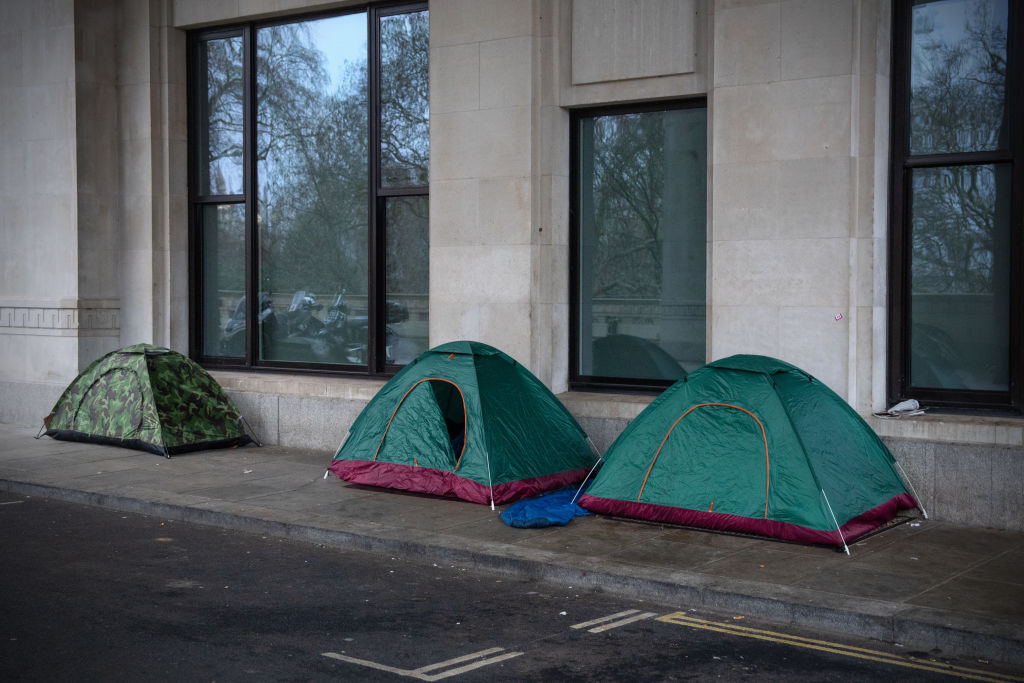Explainer: England’s homelessness crisis is at the worst it’s been in years

The number of people sleeping rough over the last year has increased in every single region in England – with the biggest increase in London. In 2022, the number of people sleeping rough was up 26 per cent compared to the previous year. In London, the numbers are up 34 per cent. This is the biggest increase seen since 2017.
Sleeping rough is only the tip of the iceberg when it comes to homelessness. It is the most visible form of homelessness, but not the only one – a high number of people are also couch-surfing, sometimes in unsafe conditions, or stuck in unsuitable temporary accommodation. The numbers are always likely to be higher than reported, as frequently people slip in and out of homelessness and data is hard to collect.
Tim Bissett, director of St Martin-in-the-Fields Charity, confirms the new numbers align with what he’s seeing on the ground. “In our own latest frontline worker survey, completed by over 1,000 frontline workers from across the UK, 78 per cent of staff said that demand for their service had increased in the last 12 months”, he says.
The rise is partially attributable to the cost-of-living crisis pushing people who can’t afford to pay their rent out of their accommodation. These numbers speak for themselves: the support offered by the government is not enough if people are ending up on the streets or in temporary accommodation in flocks.
“These figures are even more concerning when you consider the huge sums of money that were put into the Everyone in campaign during Covid, aimed at protecting and housing rough sleepers”, says Ben Howarth, managing director of Howarth Housing. The government successfully helped 37,000 people under the scheme.
But lessons haven’t been learnt and the infrastructure put in place in 2020 is not there anymore. Fewer than 1 in 4 people who were helped under the scheme moved into settled accommodation of at least six months, according to a report by Shelter. An opportunity to make a dent in the homelessness crisis was squandered.
People end up on the streets for a variety of personal reasons, but the seeds of this crisis can be found in common denominators. A shortage of affordable housing is the first one. A benefit system leaving people destitute is the second – from April, the new universal credit standard allowance for a single person will be £85 a week. According to a recent report by the Joseph Rowntree Foundation, the bare minimum cost of living for an adult in Britain is £120 a week.
Ending homelessness is part of the Conservative manifesto. The government also published its “Ending rough sleeping for good” strategy in September. Yet it’s far from any successful accomplishment – if anything, this data shows it is falling behind.
There are practical steps that can be taken to fight the rise in homelessness. The government aims to scrap Section 21 evictions in the spring – an important step that would finally tip the scales for tenants. Section 21 evictions allow landlords to take back their properties at very short notice without having to prove any “fault” by the tenants.
Losing your home is one of the key drivers of homelessness – that’s why Section 21 evictions are so detrimental. The latest government data shows that 5,940 households were threatened with homelessness in England as a result of Section 21 no-fault evictions between April and June 2022.
Increasing housing benefits in line with inflation would be another obvious step in the short-term. In the long-term, charity voices have also suggested building affordable housing with rent pegged to average local income.
Westminster, the home of politics, had the highest number of rough sleepers of any local authority over the past year. The council has historically had high rates of homelessness – as people who don’t have a warm place to stay tend to gather in the centre of cities. The crisis is right under the politicians’ eyes, round the corners of the same streets they walk to get to Parliament every day. But they keep looking away.